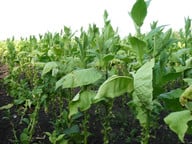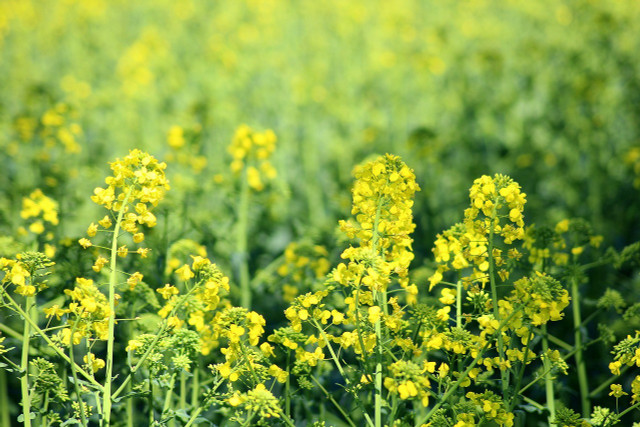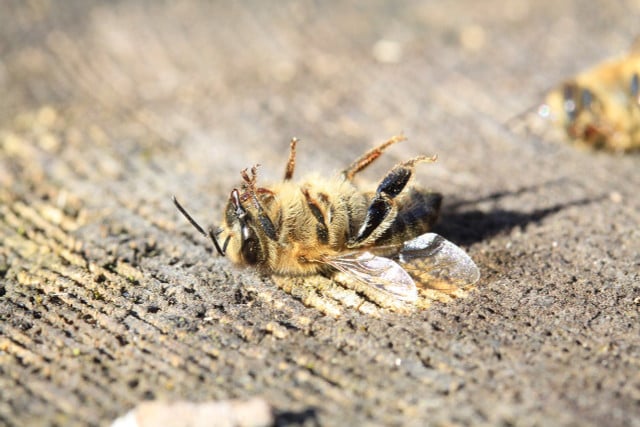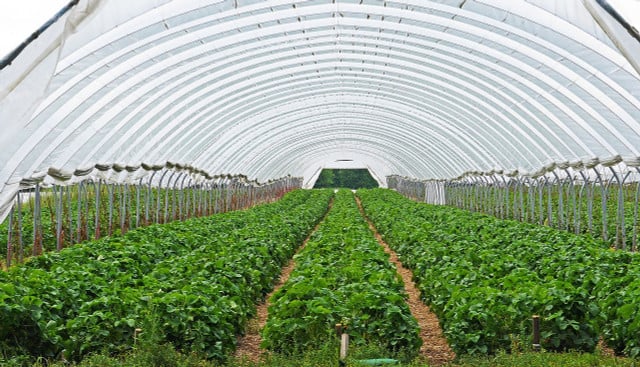
Neonicotinoids are aggressive pesticides, similar to glyphosate. Because of their fatal effect on bees, three insecticides containing the active ingredient were even banned in 2018. We explain exactly how neonicotinoids work.
Neonicotinoids are derived from the tobacco plant: True nicotine is a plant substance that the tobacco plant developed during evolution as a protection against insects. The substance damages the nervous system of animals. Nicotine was used in plant protection products as early as the 17th century, but has since been banned by the Federal Biological Research Centre for Agriculture and Forestry. The reason: it is too dangerous for humans and nature.

Therefore, starting in 1985, chemists developed synthetic neonicotinoids and first marketed them as insecticides in 1991. The three best known are:
- Imidacloprid,
- Clothianidin,
- thiamethoxam.
Other neonicotinoids are:
- Acetamiprid,
- thiacloprid,
- Dinotefuran,
- Nitenpyram.
The products are manufactured by Bayer and Syngenta, for example. They are a highly effective nerve poison. Neonicotinoids bind to the receptors of nerve cells, permanently damaging the transmission of nerve stimuli and the nervous system. The poison does not kill the animals immediately, but they lose their orientation, become weakened and eventually die.
Contents
Where and how are neonicotins used?

Similar to glyphosate’s use against weeds, neonicotinoids are found worldwide to control insects in agriculture. The most common use is in canola and beets. Just like glyphosate, neonicotinoids are largely used preventively and on a large scale.
The seeds are coated with the synthetic substances before sowing in a process known as dressing. The plant is thus protected from insects from the outset, as the neurotoxin is already distributed in the seedling and later in the entire plant, right down to the leaves and pollen.
The use of imidacloprid, clothianidin and thiamethoxam is now only permitted in greenhouses. As early as 2013, the EU Commission restricted their use, followed by a complete ban in the field in April 2018.
Neonicotins: effect on bees and other insects

The damaging effect of neonicotinoids was already discussed ten years ago. In 2008, the neonicotinoid clothianidin was blamed for a mass bee mortality in the Upper Rhine region. The pesticide had detached from the dressed seed and was carried by the wind to surrounding fields and flowering meadows. It was not until ten years later that the pesticide was banned in free agriculture.
Many studies, including that of the European Food Safety Authority (EFSA), have already proven the fatal effect of pesticides on bee colonies. If animals come into contact with the poison on pollen, leaves or nectar, disorientation, memory loss and a weakened immune system are the result. Thus, many bees can no longer find their way back to their colony and their brood, which then also starves to death. At the same time, they become more susceptible to diseases and parasites, such as the Varroa mite. In the worst case, entire bee colonies are wiped out, as happened in 2008.
Neonicotinoids have a serious impact on biodiversity. The use of herbicides in agriculture deprives insects of important food sources. The simultaneous use of insecticides, in turn, deprives larger animals of food sources.
The natural food chain is disturbed and there has thus already been a dramatic decline in insects since the late 1980s. In the studies, pesticides are mainly held responsible for this.
Effect on man and nature

- Nicotine is more toxic to humans in its pure form than arsenic or cyanide. However, since the dosage in agriculture is so low that it mainly attacks invertebrates, there is no direct danger to humans. However, insect and bee mortality has serious consequences for our entire ecosystem.
- In another study, EFSA has shown that neonicotinoids can also have a harmful effect on the development of the nervous system in infants and young children. The brain’s learning and memory function may be impaired during development.
- Studies by the European Federal Office of Consumer Protection and Food Safety confirm that supermarket products also contain residues of neonicotinoids.
- The water solubility of the pesticides also causes the toxin to spread throughout the perimeter of the field. This is why limited use within greenhouses is also problematic: although the toxin can no longer be distributed in the surrounding area by the wind, it can pass through the soil into the groundwater and thus into our drinking water. Neonicotinoids are difficult to degrade.
Even though the ban on some substances is an important step towards preserving bee colonies and biodiversity, certain neonicotinoids and glyphosate are still allowed in free agriculture. For us consumers, the following therefore continues to apply: prefer organic products. Because here chemical pesticides are taboo.









